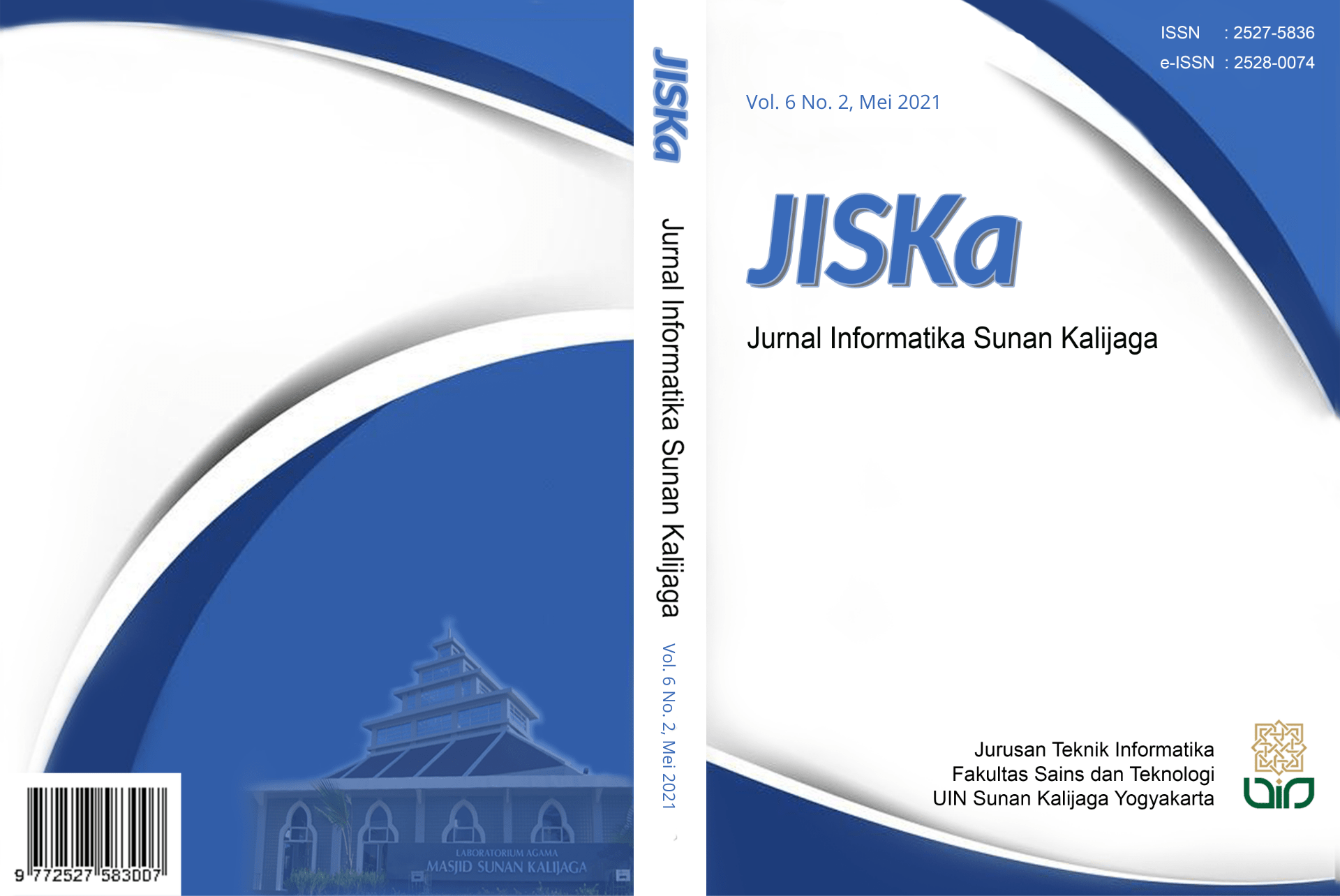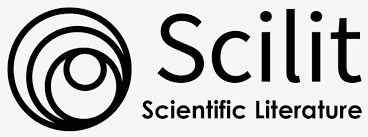Analisis Sentimen Review Halodoc Menggunakan Nai ̈ve Bayes Classifier
DOI:
https://doi.org/10.14421/jiska.2021.6.2.78-89Abstract
Healthcare service has the role to help and serve people to access medical services, i.e. providing medicines, medical consultation, or health control. Healthcare service has been transforming to a digital platform. Halodoc is one of the digital platforms that people can use for free or paid, user can also give reviews of Halodoc’s performance and services on Google Play Store to give feedback that Halodoc can use to evaluate and improve the app. The Google Play Store review is increasing every day. Therefore an analysis for the review with sentiment analysis for Halodoc’s review is needed, first phase of sentiment analysis for the review is preprocessing which has tokenization, transform to lower cases, filter stopword, dan filter token (by length) processes. The data is divided into two positive and negative classes with cross-validation and a k-fold validation value of 10, using Naïve Bayes Classifier algorithm with 81,68% accuracy and AUC 0.756, categorized as fair classification.
References
APJII. (2019). Penetrasi & Profil Perilaku Pengguna Internet Indonesia Tahun 2018.
Durairaj, M., & Ramasamy, N. (2016). A comparison of the perceptive approaches for preprocessing the data set for predicting fertility success rate. International Journal of Control Theory and Applications, 9(27), 255–260.
Ernawati, S. (2016). Penerapan Particle Swarm Optimization Untuk Seleksi Fitur Pada Analisis Sentimen Review Perusahaan Penjualan Online Menggunakan Naïve Bayes. Evolusi: Jurnal Sains dan Manajemen, 4(1), 45–54. https://doi.org/10.31294/evolusi.v4i1.605
Fitriyani, F. (2018). Metode Bagging Untuk Imbalance Class Pada Bedah Toraks Menggunakan Naive Bayes. Jurnal Kajian Ilmiah, 18(3), 278. https://doi.org/10.31599/jki.v18i3.281
Fitriyani, F., & Wahono, R. S. (2015). Integrasi Bagging dan Greedy Forward Selection pada Prediksi Cacat Software dengan Menggunakan Naïve Bayes. Journal of Software Engineering, 1(2), 101–108.
Hofmann, M., & Klinkenberg, R. (2013). RapidMiner: Data Mining Use Cases and Business Analytics Applications (Chapman & Hall/CRC Data Mining and Knowledge Discovery Series). Chapman and Hall/CRC.
Junianto, E., & Riana, D. (2017). Penerapan PSO Untuk Seleksi Fitur Pada Klasifikasi Dokumen Berita Menggunakan NBC. Jurnal Informatika, 4(1), 38–45. https://doi.org/10.31294/ji.v4i1.1810
Maarif, A. A. (2015). Penerapan Algoritma TF-IDF untuk Pencarian Karya Ilmiah. Universitas Dian Nuswantoro Semarang.
Mubarok, A., Susanti, S., & Handayani, R. N. (2019). Optimasi Algoritma Support Vector Machine Menggunakan Particle Swarm Optimization Untuk Analisis Sentimen pada Ulasan Produk Tokopedia. Universitas Adhirajasa Reswara Sanjaya.
Muhamad, H., Prasojo, C. A., Sugianto, N. A., Surtiningsih, L., & Cholissodin, I. (2017). Optimasi Naïve Bayes Classifier Dengan Menggunakan Particle Swarm Optimization Pada Data Iris. Jurnal Teknologi Informasi dan Ilmu Komputer, 4(3), 180. https://doi.org/10.25126/jtiik.201743251
Nugroho, K. S., Istiadi, I., & Marisa, F. (2020). Naive Bayes classifier optimization for text classification on e-government using particle swarm optimization. Jurnal Teknologi dan Sistem Komputer, 8(1), 21–26. https://doi.org/10.14710/jtsiskom.8.1.2020.21-26
Prasetyo, E. (2012). Data Mining : Konsep Dan Aplikasi Menggunakan Matlab. ANDI.
Samodra, J., Sumpeno, S., & Hariadi, M. (2019). Klasifikasi Dokumen Teks Berbahasa Indonesia dengan Menggunakan Naïve Bayes. SEMINAR NASIONAL ELECTRICAL, INFORMATICS, AND IT’S EDUCATIONS 2019, 71–74.
Sari, F. V., & Wibowo, A. (2019). Analisis Sentimen Pelanggan Toko Online Jd. Id Menggunakan Metode Naïve Bayes Classifier Berbasis Konversi Ikon Emosi. Simetris: Jurnal Teknik Mesin, Elektro dan Ilmu Komputer, 10(2), 681–686. https://doi.org/10.24176/simet.v10i2.3487
Taufik, A. (2017). Optimasi Particle Swarm Optimization Sebagai Seleksi Fitur Pada Analisis Sentimen Review Hotel Berbahasa Indonesia Menggunakan Algoritma Naive Bayes. Jurnal Teknik Komputer, 3(2), 40–47. https://doi.org/10.31294/jtk.v3i2.1922
Tjandrawinata, R. R. (2016). Industri 4.0: revolusi industri abad ini dan pengaruhnya pada bidang kesehatan dan bioteknologi. https://doi.org/10.5281/zenodo.49404
Ulya, F. N. (2019, Agustus 19). Survei: 84,4 Persen Masyarakat Puas dengan Layanan Kesehatan Digital. Kompas.com. https://money.kompas.com/read/2019/08/19/134000926/survei--84-4-persen-masyarakat-puas-dengan-layanan-kesehatan-digital?page=all
Downloads
Published
How to Cite
Issue
Section
License
Copyright (c) 2021 Asep Hendra, Fitriyani Fitriyani

This work is licensed under a Creative Commons Attribution-NonCommercial 4.0 International License.
Authors who publish with this journal agree to the following terms as stated in http://creativecommons.org/licenses/by-nc/4.0
a. Authors retain copyright and grant the journal right of first publication with the work simultaneously licensed under a Creative Commons Attribution License that allows others to share the work with an acknowledgement of the work's authorship and initial publication in this journal.
b. Authors are able to enter into separate, additional contractual arrangements for the non-exclusive distribution of the journal's published version of the work (e.g., post it to an institutional repository or publish it in a book), with an acknowledgement of its initial publication in this journal.
c. Authors are permitted and encouraged to post their work online (e.g., in institutional repositories or on their website) prior to and during the submission process, as it can lead to productive exchanges, as well as earlier and greater citation of published work.










